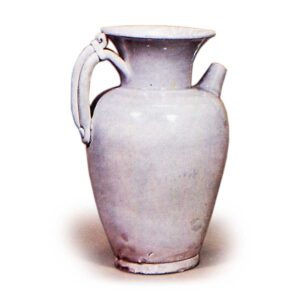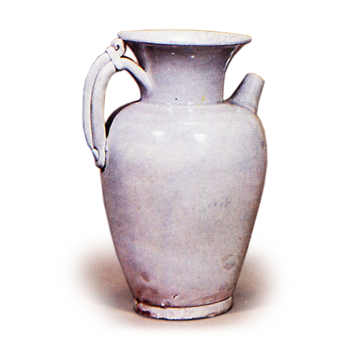
or Xing kiln. Although the kiln site of the Xingzhou kiln in China has not yet been discovered, it is thought to have produced a large number of white porcelain wares in the vicinity of Neiqiu County, Xingzhou, Hebei Province, which were probably produced in the Tang dynasty and are considered to be comparable to Yuezhou celadon. Among the white porcelain of the Tang dynasty, the white porcelain of Xingzhou is generally referred to today as the white porcelain of Xingzhou, which is mostly solid stoneware with a grayish-white glaze with a yellowish hue. The reason for the yellowish tinge, in contrast to the slightly bluish white porcelain of the southern Jizhou kiln, is the use of coal as fuel in northern kilns, which results in the oxidation of the kiln’s firing. Xingzhou white porcelain comes in a variety of shapes, but many of the shapes are identical to those of Tang Sancai wares, such as wannian jars, four-ear jars, dragon-ear vases, and phoenix-head vases, indicating that they were produced as early as the Tang dynasty.


